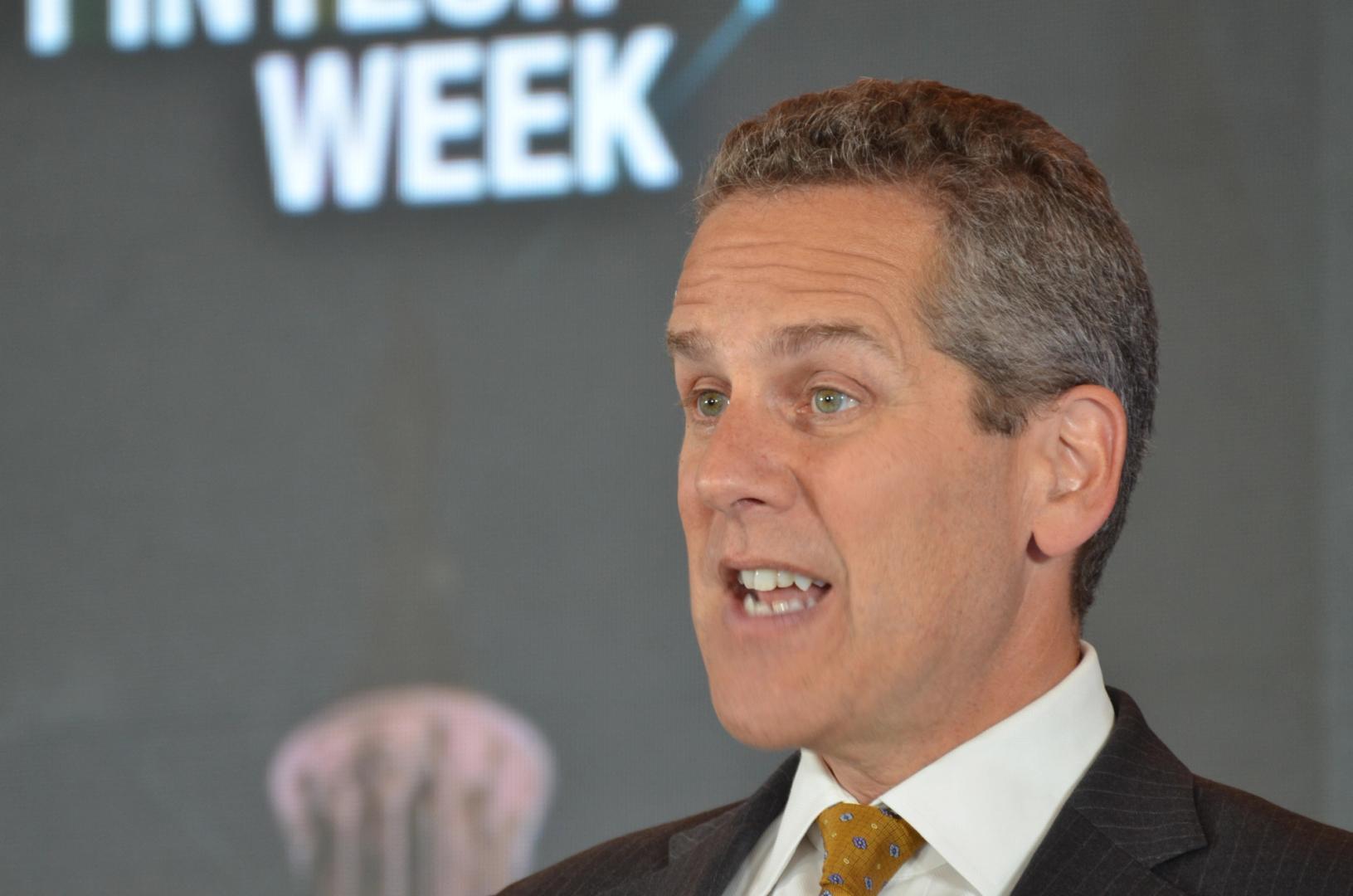
WASHINGTON, D.C. — The crypto sector and a few of the monetary giants on Wall Avenue are sprinting to place stablecoin infrastructure in place effectively earlier than the U.S. watchdogs arrange their laws, and Federal Reserve Governor Michael Barr took a second on Thursday to remind the trade’s authorized consultants of the hazards posed by nominally secure property.
“Issuing liquid liabilities redeemable at par however backed by property, even high-quality ones, about which collectors may need questions makes non-public cash weak to run danger,” Barr mentioned throughout a DC Fintech Week occasion in Washington, stating that allowable reserves comparable to uninsured deposits may pose risks.
He was the Fed’s high financial-supervision official because the board’s earlier vice chairman in that position, however he stepped down when the administration of President Donald Trump arrived. The digital property sector noticed Barr as a part of the “debanking” development through which trade insiders accused banking regulators of encouraging banks to step away from their companies, and the Fed and different U.S. regulators have lately reversed the extra restrictive crypto coverage stance they’d taken throughout his tenure.
However Barr stays on the seven-member Fed board and cautioned the businesses which might be writing stablecoin guidelines — together with his personal — of “the lengthy and painful historical past of personal cash created with inadequate safeguards.”
Barr provided the U.S. expertise with cash market funds for example, noting the Reserve Main Fund “broke the buck” — fell off its $1 worth per share — in 2008 as the worldwide monetary disaster received underway, and the way the newer covid pandemic put strain on such funds once more.
Regardless of the passage of the Guiding and Establishing Nationwide Innovation for U.S. Stablecoins (GENIUS) Act, the banking regulators have not but written the foundations they’re going to must implement it, leaving the trade in a type of unregulated grey space. As this continues, the world’s main stablecoin, Tether’s USDT, is run offshore and underneath a reserve method that would not qualify towards the pending U.S. customary (although Tether can also be planning a full entry into U.S. markets).
“Stablecoin issuers historically retain income from investing reserve property and subsequently have a excessive incentive to maximise the return on their reserve property by extending the danger spectrum as far out as attainable,” Barr famous. “Stretching the boundaries of permissible reserve property can improve income in good instances however dangers a crack in confidence throughout inevitable bouts of market stress.”
“For essentially the most half, I agree with all the pieces he’s saying,” mentioned Corey Then, vice chairman and deputy normal counsel for world coverage at Circle, the issuer of USDC, the main U.S.-based stablecoin.
“There’s numerous work to be completed within the rulemaking course of,” the Circle government mentioned on the identical Washington occasion, taking the stage simply after Barr. “The very last thing we wish at Circle is a permissive surroundings.”
Barr flagged the inclusion of uninsured deposits as potential reserves for issuers underneath GENIUS, noting they have been “a key danger issue in the course of the March 2023 banking stress.” He additionally pointed at so-called “in a single day repo” as a reserve element that “may embody doubtlessly unstable property.”
Through the 2023 disaster amongst tech-centered U.S. banks, Circle had as a lot as 8% of its reserves at failing Silicon Valley Financial institution, value greater than $3 billion, inflicting a rush to redeem USDC that pushed it quickly off its greenback peg. Different high-profile stablecoins have additionally strayed from the peg, together with within the implosion of Terra’s UST in 2022.
Barr provided a GENIUS Act hypothetical, suggesting that as a result of bitcoin has been authorized tender in El Salvador, an argument may very well be made for bitcoin repo as an eligible reserve asset.
Federal and state regulators want to write down “a complete algorithm that may fill in vital gaps and be sure that there are strong guardrails to guard customers of stablecoins and mitigate broader dangers to the monetary system,” Barr mentioned.
Nonetheless, as a result of issuers could also be regulated throughout a spectrum of presidency businesses at each the federal and state ranges, he warned of the danger of arbitrage through which issuers store for the simplest watchdog, regardless of the GENIUS Act’s intent that they be considerably related.
Within the 2008 meltdown, American Worldwide Group’s dangerous financial-products arm was famously overseen by a weaker federal regulator — the Workplace of Thrift Supervision — and far of its different operations by a variety of state supervisors, leading to unnoticed hazards that ultimately threatened the broader monetary system. (The OTS was subsequently disbanded.)
Learn Extra: Tether CEO Says He’ll Comply With GENIUS to Come to U.S., Circle Says It is Set Now




